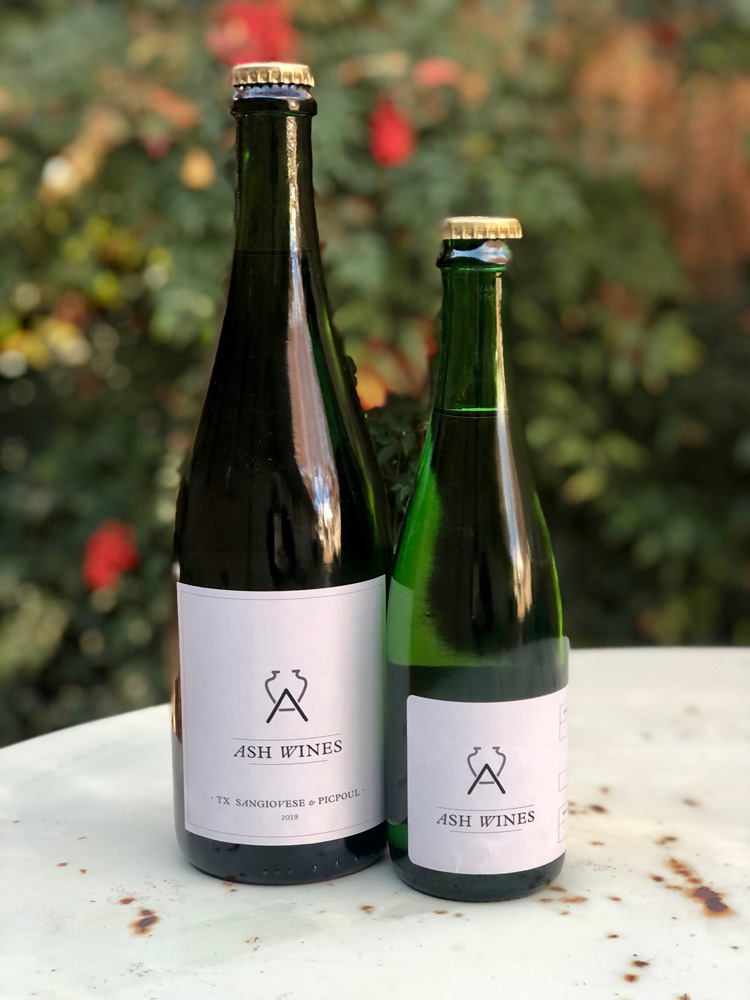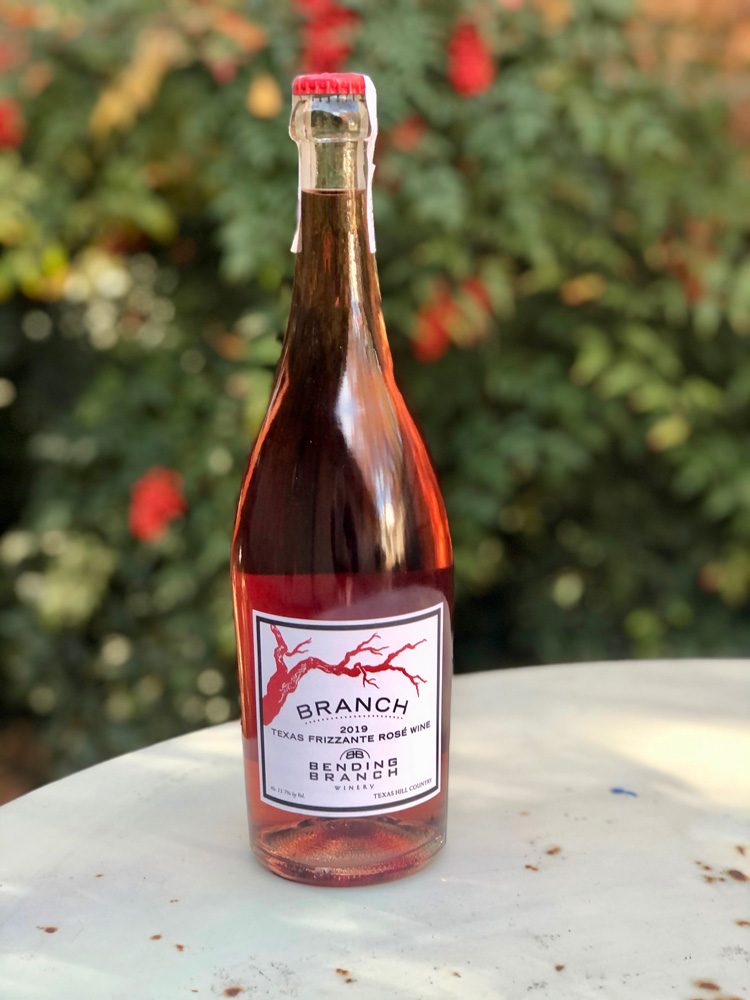Look no further than Texas to get a sparkling wine fix. The Lone Star State offers a wide array of options to satisfy a craving for bubbles. Texas winemakers utilize many different grapes for sparkling wine, and their winemaking approach is just as diverse. No matter which Texas sparkling wine you select, these wines will bring a spirit of celebration to an otherwise ordinary day.
Which Texas-grown grapes make good sparkling wine? It would be difficult to name a variety that is unsuitable for sparkling wine production. With the right growing conditions in the vineyard and the proper harvest time, most grape varieties fit the bill. The following selections include both white and red grapes from the Texas Hill Country in central Texas and the Texas High Plains near Lubbock.
Texans can do many things, but we cannot produce Champagne. That distinction belongs to the Champagne region of France. Because Champagne is a protected name, bubbly wines from Texas must use different names. Sparkling wine and Pét-Nat are most common.
The first step in sparkling wine production is the creation of a still base wine. From that point, winemakers utilize many different approaches to achieve the notorious sparkle. A few Texas winemakers follow the traditional, labor-intensive method that is employed in Champagne. This method requires a second fermentation that happens in the bottle. After a period of time, each bottle is opened to remove the used yeast cells. Finally, the bottle is topped off with some additional wine and possibly a bit of sugar.
Many Texas producers make a type of sparkling wine called Petillant Naturel, or Pét-Nat. That term indicates that the wine was bottled before the first fermentation was complete. The resulting wine is unfiltered, and it is often cloudy rather than perfectly clear. While this style has become popular recently, the method, also called methodé ancestrale, has been around for centuries.
Another way to create bubbles is the Charmat method. Wine is kept in large steel tanks that trap the carbonation created during the second fermentation. This process, the most common sparkling production technique in the world, is best known for creating the bubbles in Prosecco.
The vigor of the bubbles, also known as the bead, varies according to winemaking technique. Some sparkling wines come with specific directions on safely opening the bottles while others may have a mere hint of fizz. When it comes to the size of the individual bubbles, the Pét-Nat and Charmat methods both produce larger bubbles than those created during the traditional method.
No matter the grapes selected or winemaking style, Texas sparkling wine should be in regular rotation. The following selections are all considered brut, or dry. Sparkling wine makes a wonderful pairing with salty, fatty, and rich foods. The bubbles act as palate cleansers.

McPherson Cellars Sparkling Chenin Blanc ($28) – This wine is a partnership between McPherson Cellars founder Kim McPherson and his brother Jon, a winemaker in California. The only wine on the list with a cork closure, the wine made a cross-country journey to be bottled in California. Texas does not yet have the bottling line necessary to utilize cork closures on sparkling wine. Classic Chenin Blanc aromas of yellow apple, pear, and honeydew are prominent. Stainless steel aging preserves the fresh aromas. Charmat method.

La Valentía 2019 Sparkling Chenin Blanc ($42) – This new release from Rae Wilson (Dandy Rosé, The Grower Project) showcases grapes from 48-year old vines from the Texas High Plains. Older vineyards produce fewer grapes, but the grapes have more concentrated flavors. The wine has powerful aromas of baked spiced apples, and the bright acidity makes for easy pairing with many dishes. Time spent in neutral oak barrels adds complexity. An interesting contrast to the McPherson Sparkling Chenin Blanc that is aged in stainless steel. Traditional method with no disgorgement.

Ash Wines 2019 Sparkling Sangiovese / Picpoul Blanc ($50) – Another brand-new release, this wine is an interesting blend of 70% Sangiovese and 30% Picpoul Blanc from the Texas High Plains. Adrienne Ash, the assistant winemaker at The Austin Winery, fermented and aged the wine in clay amphora. That unique choice creates a creamy texture with profound minerality. The salmon-colored wine has layers of flavor that hold tension between delicate fruity notes and earthy characteristics. Traditional method.

Pedernales Cellars 2019 Kyla ($35) – Utilizing Tempranillo from the Kuhlken Vineyards in the Texas Hill Country, winemakers David Kuhlken and Joanna Wilczoch embrace the Pét-Nat label. The grapes were hand-harvested, and the wine was hand bottled. Fresh red fruit aromas dominate, with a hint of the bready characteristic found in Champagne. Bottle variation is common in Pét-Nat, and some bottles require extra caution when opening since contents under pressure may erupt.

William Chris 2019 Petillant Naturel ($25) – Earlier vintages of William Chris Pét-Nat had a reputation for being rather volatile when the crown cap was removed. Changes in the cellar have perfected the Pét-Nat technique, and the 2019 blend of Sangiovese, Mourvèdre, Cinsault, and Trebbiano is a winner as well. A bottle tag indicates that the bottle should be stored upright, served cold, and opened quickly. There’s never a dull moment with Pét-Nat on the menu.

Siboney Cellars 2019 “Coral Estrellas Rosé” ($32) – Winemaker Barbara Lecuona crafted Siboney’s first sparkling from Sangiovese located in the Texas High Plains. Texas Sangiovese doesn’t usually make an intensely-colored wine, but the bottle showcases a clear, bright pink wine. Lecuona notes that this wine does not require any special handling when opening. Estrellas is Spanish for stars, and these estrellas are brilliant. Traditional method.

Bending Branch 2019 Frizzante Rosé ($22) – Texas Hill Country Tannat gives this sparkling wine its verve. While Tannat can be a highly tannic grape, the sparkling wine production process makes it approachable. Frizzante is an Italian term meaning semi-sparking. While the wine is seriously delicious with flavors of red berries and stone fruit, it doesn’t have to be taken too seriously. Just enjoy! Carbonation method.
